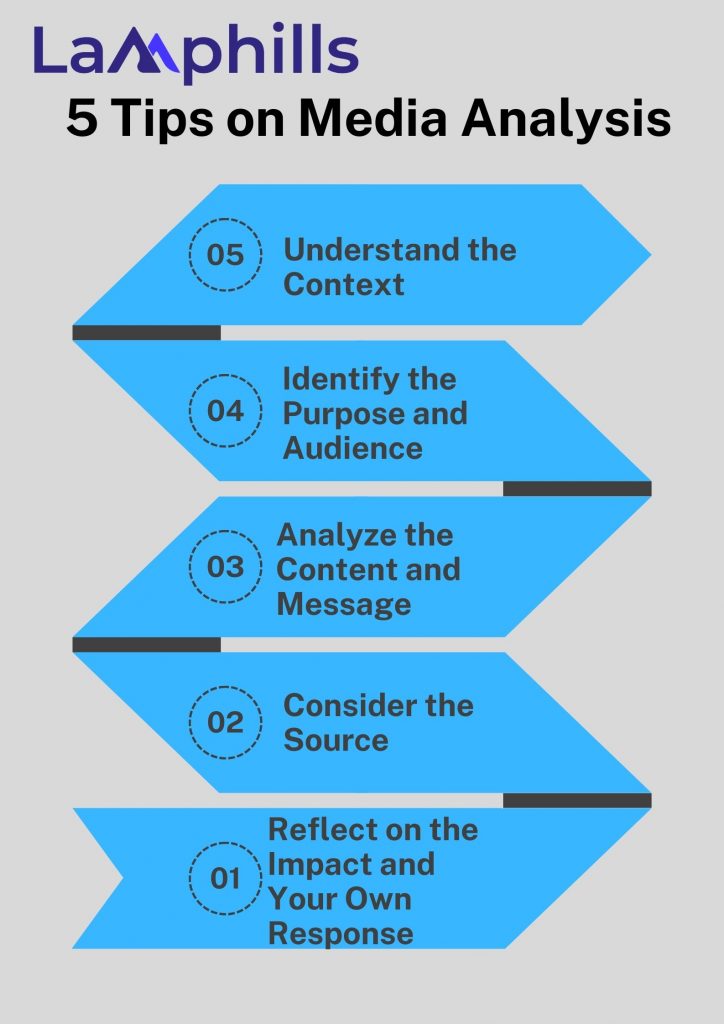Have you encountered the concept of media analysis in your digital marketing journey? Maybe you’ve heard about it in enhancing your PR efforts. But how does media analysis impact your strategy and set it apart? You’ve probably encountered plenty of generic explanations online that don’t quite translate into actionable marketing plans.
I’ve compiled insights from academic research and industry knowledge to address this, adding my experiences into the mix. This guide breaks down media analysis step by step, providing practical understanding and strategies for your marketing endeavors. I will also guide you in harnessing the potential of Competitive Social Media Analysis and Sentiment Social Media Analysis to bolster your business outcomes. What aspects of media analysis are you most curious about applying to your strategies?
Let’s get started!
Key Points
- Understanding methods for analyzing media coverage of products, services, and the industry is crucial for practical analysis.
- Quantitative analysis involves tracking the frequency and spread of mentions, focusing on numerical data.
- Qualitative analysis aims to understand the context and message being communicated, focusing on the content’s meaning and impact.
- A thorough media analysis should combine quantitative and qualitative methods to be comprehensive and reliable.
- The importance of media analysis is growing in the business world, highlighting the need to stay competitive by leveraging these insights.
What is Media Analysis
Media analysis plays a critical role in developing a strong marketing strategy. To fully comprehend its importance, let’s begin by defining it and discussing its significance to business success.
Media analysis has a long history, and the term “media content analysis” was introduced by Harold Lasswell in 1927. Initially, it was a methodical approach to studying mass media, primarily the press, television, and radio. Over time, media monitoring has become a complex strategy that includes an extensive analysis of digital content, such as websites, social media, and even visual content.
Marketers have been conducting media analysis for years. However, in the past, they had to manually search for brand mentions, which took up a significant amount of their time. In today’s world, where information overload and millions of websites exist, it would be impossible to manually search and analyze the media each company mentions. That’s why automation of media analysis has become an essential part of the process.
Social media analysis involves collecting and analyzing information from social networks to help make better business choices. It also allows organizations to check their performance based on those decisions by looking at social media outcomes. This process will help you understand what people say and feel about your brand or products. You can use this insight to improve your strategies and engage with your audience more effectively.
How To Conduct An Effective Media Analysis
Media analysis isn’t a novel idea, but thanks to automation technology, it has become a critical component in most PR and marketing plans. Nowadays, with the advent of sophisticated tools like Detern, businesses can continuously monitor mentions.
Let’s explore the changes over time and the current workings of media analysis.
Traditional Methods of Conducting Media Analysis
Initially, media analysis required a manual effort. This involved extensive, labor-intensive work with individuals dedicating their entire day to searching for mentions of the brand, increasing the likelihood of errors because of human nature.
Previously, there were fewer media outlets to monitor, typically limited to:
– Newspapers
– Magazines
– Radio
– Television
Companies looking to enhance their media analysis efforts often turned to agencies, though this option wasn’t financially feasible for all.
The widespread adoption of the internet transformed media analysis. Marketing and PR professionals found themselves navigating an ever-expanding digital landscape, including online magazines, forums, social media, and various other platforms. The introduction of automation technology marked a significant milestone.
It’s more than just counting the number of times your brand is mentioned or the comments. This process digs deeper into people’s feelings and opinions, giving you insights into whether the conversation about your brand is positive, negative, or neutral. This allows you to get a clearer picture of how people perceive your brand, which allows you to tailor your social media strategy more effectively.
What Is the Media Analysis Process?

Credit: Freepik
Check out the process of media analysis for more understanding:
#1. Set Clear Goals
Before diving into media analysis, know exactly what you’re aiming for. This could be increasing brand visibility, boosting reputation, attracting customers, or building stronger loyalty. Ensure these goals are specific, measurable, realistic, relevant, and time-sensitive. Choose the right media platforms and metrics that align with these goals.
#2. Choose Your Media Platforms
Identify where your content will come from. This includes various channels like websites, social media, TV, and newspapers. Depending on your goals, you might look at
- Owned Media: Your personal channels (like your website or blog).
- Earned Media: Coverage you didn’t pay for (like news mentions).
- Shared Media: Platforms for interaction (like social media).
- Paid Media: Advertising spaces you buy.
#3. Collect Data
Gather information such as how often you’re mentioned in the media, the sentiment of these mentions, how far the message reaches, and how people engage with it. Use tools and techniques for monitoring and analyzing this data, looking for volume, sentiment, engagement, and impact.
#4. Analyze the Data
Look at the data collected to see what it tells you about your media presence about your goals. Use analysis methods like:
- SWOT: Identifying strengths, weaknesses, opportunities, and threats.
- PESTLE: Exploring political, economic, social, technological, legal, and environmental impacts.
- SOAR: Focusing on strengths, opportunities, aspirations, and results.
- SMART: Evaluating goals for specificity, measurability, achievability, relevance, and timeliness.
#5. Report Findings
Share your analysis with your team, management, clients, or partners. This could be through dashboards showing key metrics, detailed reports, engaging presentations, or visual infographics summarizing your findings.
#6. Adjust Strategies
Use your findings to tweak your approach. Implement any recommendations from your analysis and try out new strategies, channels, or content to see if they improve your results. Remember, this is an ongoing process that requires continuous monitoring and adjustment based on new data.
This simplified version captures the essence of the media analysis process, making it easier to understand and implement.
What Are the Techniques of Media Analysis?
Media Analysis Techniques start by exploring four essential methods for interpreting media, semiotic theory, Marxist theory, psychoanalytic theory, and sociological theory. According to Berger, creative individuals must be familiar with these theories to fully grasp how their work is perceived in the real world.
Why Is Media Analysis Important?
Media analysis is incredibly valuable for businesses and other types of organizations. It plays a crucial role in offering strategic insights not only into your own media coverage but also into that of your competitors. Doing so helps you better understand the landscape you’re operating in. Additionally, it evaluates the effectiveness of your relationships with the media. This is key to ensuring that your communications strategy works as intended and that your intended audience receives and understands your messages.
Furthermore, media analysis can assess how to impact your key messages. This means it checks whether the messages you’re sending out resonate with your audience and achieve the desired effect. Overall, media analysis provides a comprehensive view of your position in the media landscape, enabling you to make informed decisions and strategic adjustments to your communication plans.

What Is Media Studies Analysis?
Media analysis examines different media to decide which is best for promoting a product or service. It involves deciding how to present your message based on the chosen media. It’s also crucial to consider how your target audience will receive and react to your message through the selected media.
Media includes:
- Newspapers
- Magazines
- Radio
- Television
- Internet
- Press agencies
- News reporting agencies
Examples of Media Analysis

Credit: Freepik
Media analysis involves looking at different aspects to understand how your brand is doing regarding media attention and image. Here’s a simpler breakdown of some important parts:
#1. Share of Voice
This is about comparing how much you’re mentioned in the media to your competitors or similar brands. It shows how visible your brand is. If your brand is mentioned a lot, it means you have a larger “share of the voice.” This info helps you determine ways to keep or boost your media presence.
#2. Sentiment
This measures how people feel about your brand in the media, using a scale from positive to negative. It’s important to know what your audience thinks about you, whether they are customers, partners, or investors. It’s also useful for handling crises and checking if your strategies are working well.
#3. Impressions
This counts the potential number of people who might have seen your content. It’s a way to measure how far your message reaches and its possible effect on making people aware of your brand. This can be linked with sentiment to see how your brand’s image is doing.
#4. Topics
This is about looking into specific subjects to your business, like digital banking, online shopping, or mental health. It’s good to know the main themes and important topics being discussed in your field.
#5. Key Message Tracking
This is about watching how the main messages and themes from your media plans or campaigns are covered in the media. It helps you understand if your intended messages are getting through and how they affect your brand’s image.
Purpose of Media Analysis
Analyzing media aims to understand its significant role in spreading information about a brand’s offerings. Leading organizations develop strategies to make the most of such analysis. This helps them achieve key objectives more effectively, including pinpointing important issues that need focus, figuring out the best ways to communicate certain messages, and enhancing the coverage of ongoing topics.
Checklist for Media Content Analysis
Methodologies of Media Analysis
Understanding the methods used for analyzing media is crucial. It’s not something to be done randomly. First, examine how news about your products or services has been covered. What’s being said about your industry? This information is vital for your analysis.
The key methods are:
- Quantitative analysis
- Qualitative analysis
Each has its advantages and disadvantages. Quantitative analysis is all about numbers. It involves tracking how often something of interest is mentioned. This method includes looking at:
- The number of times something is mentioned
- How widespread the coverage is
- How the media is divided
- The proportion of the conversation your topic holds
Qualitative analysis, however, focuses on the connection between the message and its intended audience. It tries to understand the context of the message. This approach interprets what the media, across different platforms, is trying to communicate to the public. A thorough media analysis should use both methods to be reliable.
Media analysis is detailed and vital for any business looking to stand out. While market research has been the focus for many years, the value of media analytics is becoming more recognized. So, it’s important not to fall behind your competitors in this area.
How to Do a Media Content Analysis?
A step-by-step guide to conducting a content analysis:
- Develop your research questions.
- Choose the content you will analyze.
- Identify your biases.
- Define the units and categories of coding.
- Develop a coding scheme.
- Code the content.
- Analyze the results.
Our Media Relations service is guided by a comprehensive knowledge of the constantly changing media industry and an extensive network of influential journalists, bloggers, and thought leaders across various platforms. We prioritize building strong, enduring relationships with our clients, based on trust, expertise, and a mutual dedication to producing top-notch, influential content. Read more.
Competitive Social Media Analysis
Keeping an eye on your competitors through social media helps you stay one step ahead and ensures you don’t lag behind in the digital race. Conducting a social media competitor analytics can involve several key activities:
- Reviewing Competitors’ Social Media Profiles: This includes examining their overall presence, the platforms they’re active on, and how they present their brand online.
- Evaluating Their Content Strategy: Look at the types of content they share across different platforms. This could be videos, blog posts, infographics, or customer testimonials. Note what seems to engage their audience the most.
- Analyzing Their Following and Engagement Levels: List how many people follow your competitors and how much engagement they receive on their posts. This includes likes, shares, comments, and overall interaction rates.
This approach helps you understand what your competitors are doing well and identifies opportunities where you could outperform them by innovating or refining your social media strategy.
Sentiment Social Media Analysis
Social media sentiment analytics involves gathering and examining information to understand people’s emotions when discussing your brand on social
Related Post
- THE ULTIMATE GUIDE TO OWNED MEDIA: Best Strategies & Examples
- Social Media Etiquette: Best Practices
- Press Release Submission Sites: Top 50 Press Release Submission Websites 2025 (+ FREE TIPS)
- BROADCAST MEDIA: Meaning, Types and Examples
- 20 BEST MEDIA MONITORING TOOLS IN 2025






